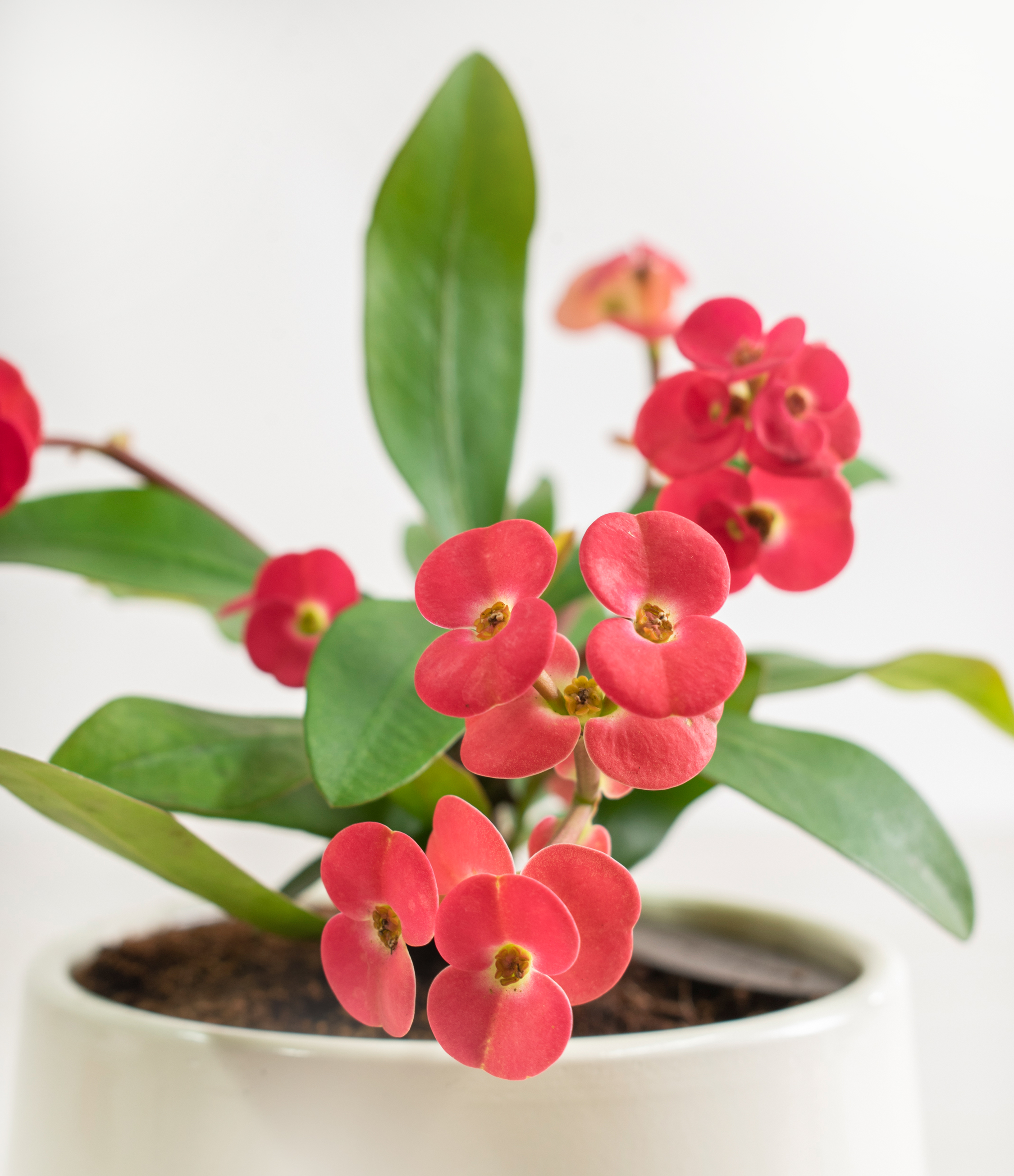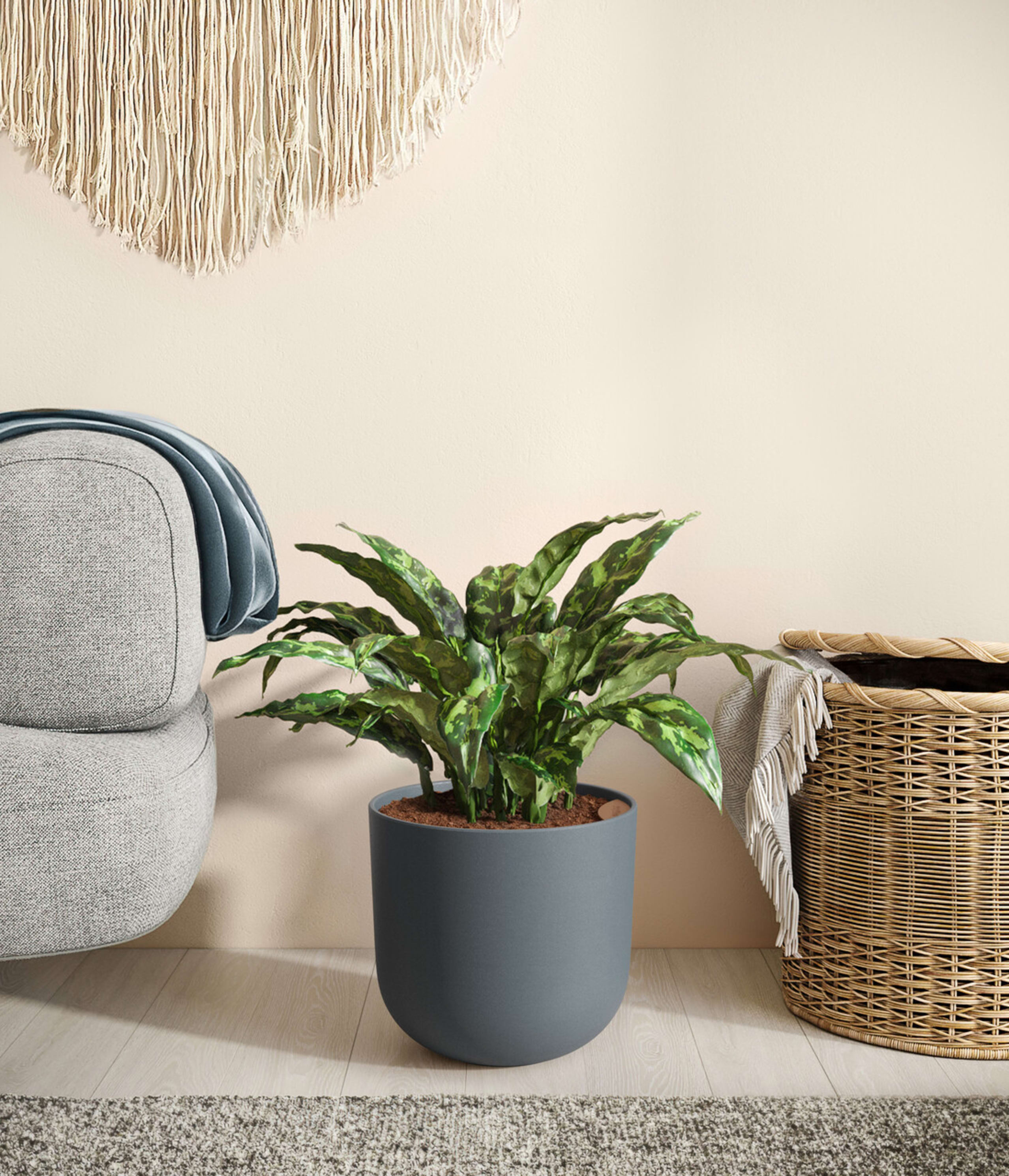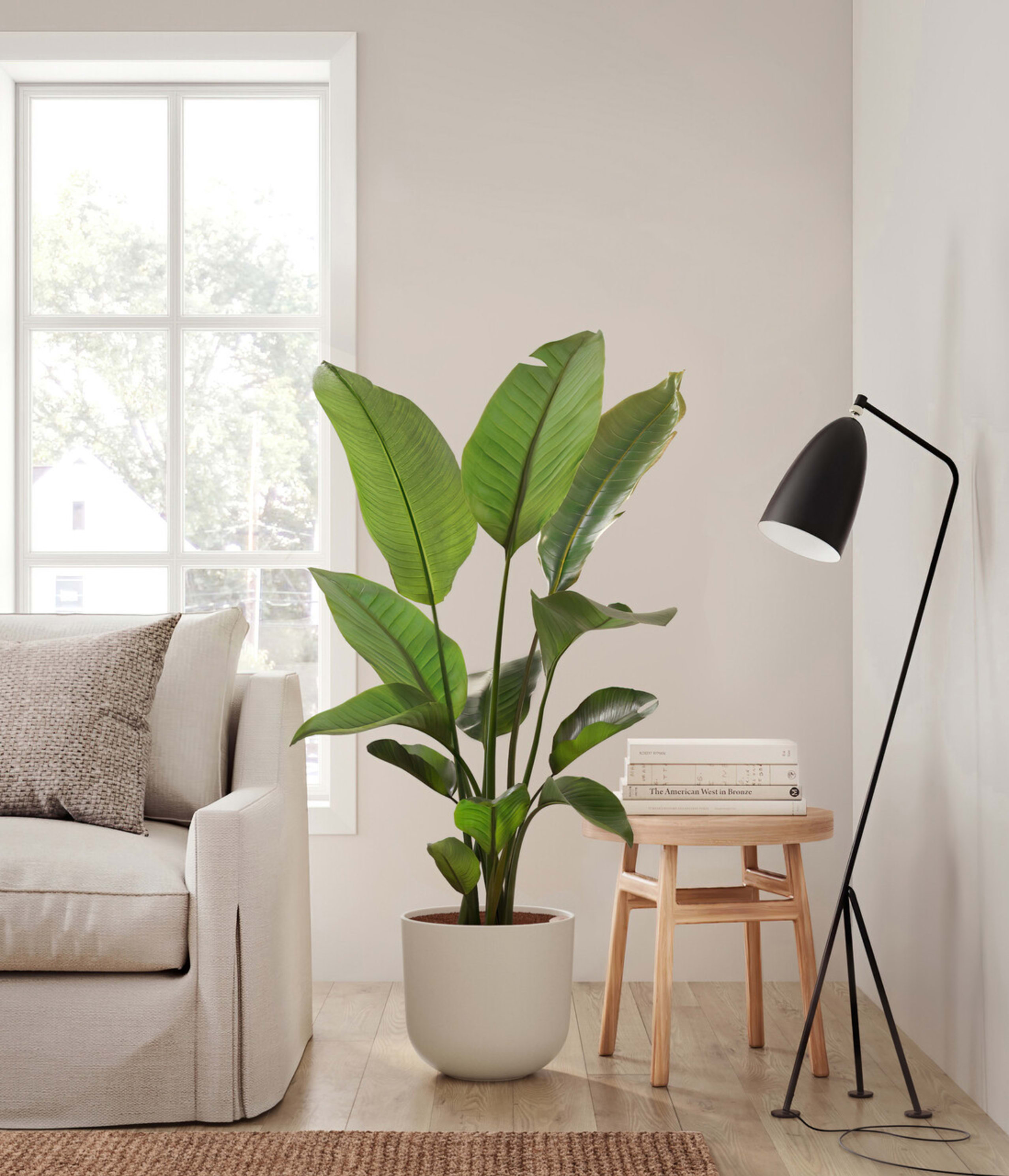Plant care library / Crown Of Thorns
How to care for Crown Of Thorns
About Crown Of Thorns
Native to Madagascar, the Crown of Thorns plant is a resilient succulent that has been grown for centuries as a symbol of good luck and protection. Its strikingly beautiful, spiky leaves come in shades of green, red, and yellow, adding a dramatic touch to any indoor or outdoor space. Despite its tough exterior, the Crown of Thorns is surprisingly easy to care for, thriving in bright, indirect light and dry soil. With its unique appearance and low maintenance requirements, the Crown of Thorns plant is the perfect addition to any plant collection.
How Often Should I Water My Crown Of Thorns
with easyplant, watering you crown of thorns is easy. just check the reservoir once every two months and fill it when empty, and you're all set!
If you don't have an easyplant pot, it's important to be cautious with watering to ensure your plant remains healthy. Allow the soil to dry completely between waterings, as Crown of Thorns plants are susceptible to root rot if the soil is constantly wet. As a drought-tolerant plant, Crown of Thorns can go longer periods without water, so it's better to underwater than overwater. Adjust your watering schedule based on the season and the plant's location, as humidity and temperature can affect how often it needs water.
Crown Of Thorns Light Needs
Crown Of Thorns grows best in a space with bright direct light, where the sunlight streams inside directly, and can also adapt to spaces with bright indirect light, where the sun rays are diffused. Avoid placing it in spaces with low light or spaces without natural sunlight.
Crown Of Thorns Plant Care
Crown of Thorns is a relatively easy plant to care for. It prefers bright, indirect light and well-draining soil. Allow the soil to dry out between waterings, and be careful not to overwater. This plant is drought tolerant and can withstand periods of dryness, so it's better to err on the side of underwatering rather than overwatering. Pruning can help control its size and shape, and you should remove any dead or yellowing leaves to promote new growth. Similarly, Crown of Thorns, being a flowering plant, benefits from 'deadheading'. As its blooms start to fade and die off, it's advisable to remove them. This practice allows the plant to focus its energy on producing new blooms and maintaining overall health. Remember, regularly removing spent flowers is a normal part of care for plants that bloom.
How Big Do Crown Of Thorns Plants Grow?
Crown of Thorns, also known as Euphorbia milii, is a slow-growing succulent plant that typically reaches a height of 1-3 feet and a width of 1-2 feet. Its stems are covered in thorns and are usually green or brown in color. The plant produces bright red, pink, or white flowers that bloom year-round when given the right care.
Temperature & Humidity
Crown of Thorns plants are best kept in warm temperatures ranging from 60°F to 80°F (15°C – 27°C), similar to their natural habitat. These plants are sensitive to sudden temperature changes, so it's important to avoid placing them near vents, windows, or air conditioning units. When it comes to humidity, Crown of Thorns plants prefer a drier environment with low to moderate humidity levels. They can tolerate lower humidity levels, making them ideal for those living in drier climates. It's important to let the soil dry out completely between watering to avoid over-watering and root rot. With proper care, Crown of Thorns plants will bloom with stunning pink, red, or white flowers all year round.
Are Crown Of Thorns Plants Toxic for Pets & Kids?
Crown of Thorns is considered to be mildly toxic if ingested, so it's important to keep it away from curious children and pets. While the plant is generally safe to handle, it's best to wear gloves when pruning to avoid any potential skin irritation. If you suspect your pet has ingested any part of the plant, contact your veterinarian immediately for advice.
Troubleshooting Common Problems with Crown Of Thorns
if you notice the crown of thorns' leaves becoming spotted in black or yellow, it may not be receiving enough bright light. Gradually move the pot to a brighter location to avoid shocking the plant. If a leaf becomes weak or droopy, remove the entire leaf and relocate the pot to a brighter area. If the leaves are becoming too long or leggy, it is also an indication that the plant is not getting enough sunlight. In this case, gradually move the pot to a brighter location to encourage fuller growth. If multiple leaves are losing color, moving the pot to a more brightly lit location may be necessary. On the other hand, if multiple leaves are becoming brown or crispy, moving the pot to a less directly lit area is recommended. In general, the crown of thorns prefers bright indirect light and should be kept away from drafts.

 Small Plants
Small Plants Medium Plants
Medium Plants Plants Collections
Plants Collections Large Plants
Large Plants Huge Plants
Huge Plants